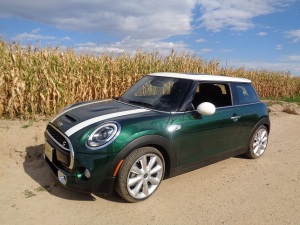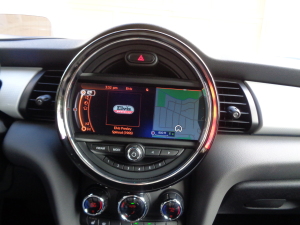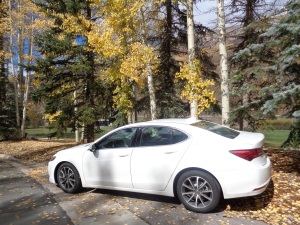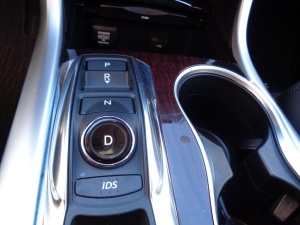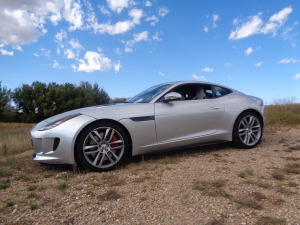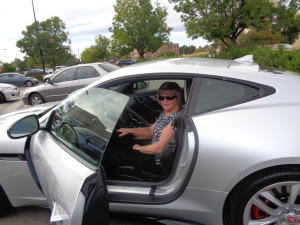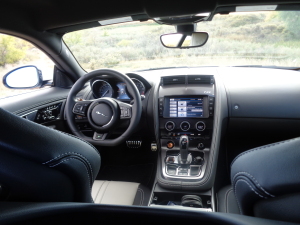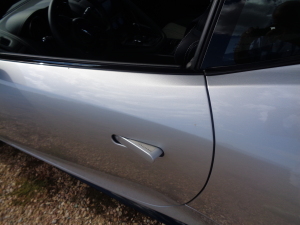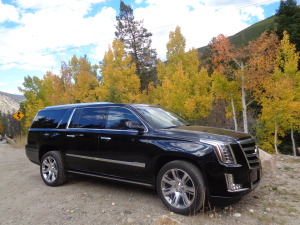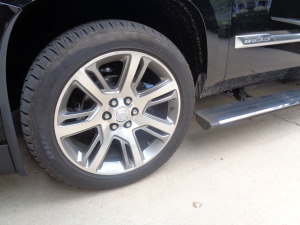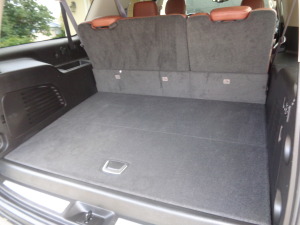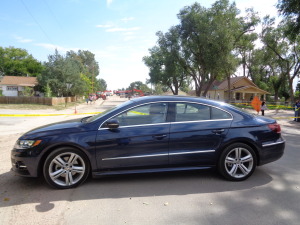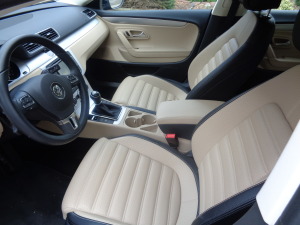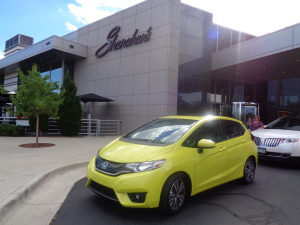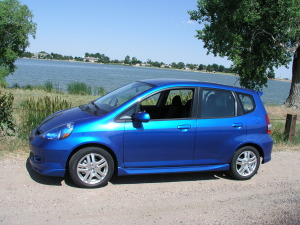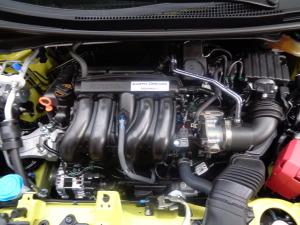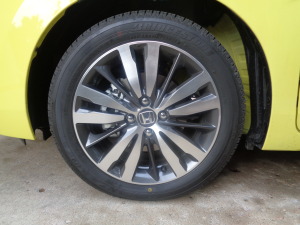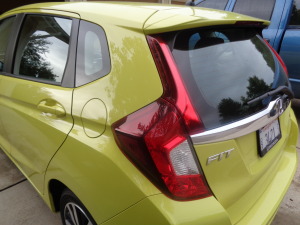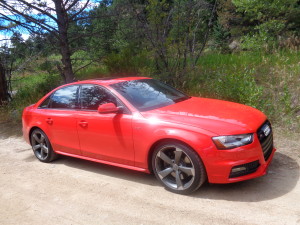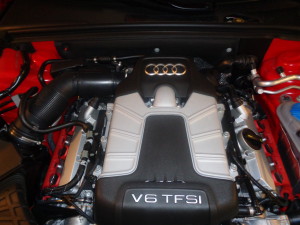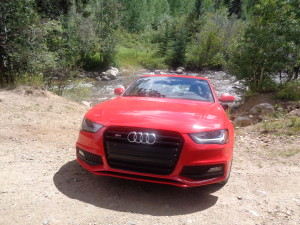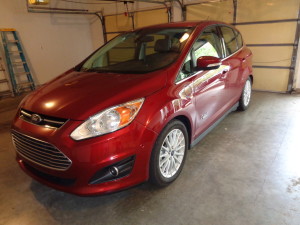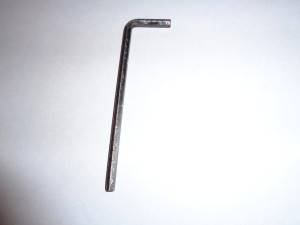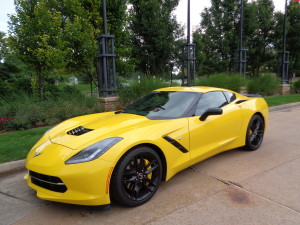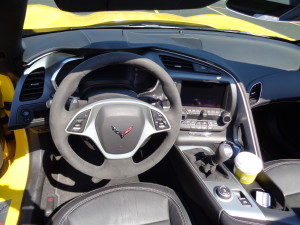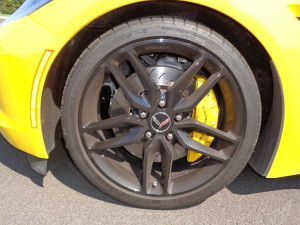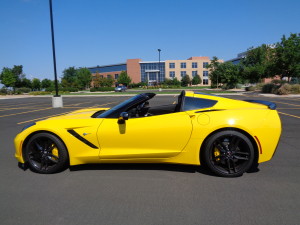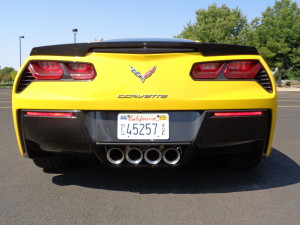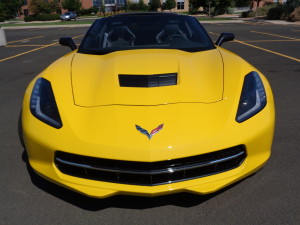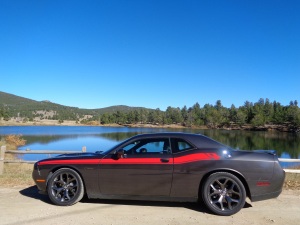
Improvements in the 2015 Dodge Challenger R/T surfaced among the curves and tight twists on a stretch of Colo. 119 from Rollinsville to Blackhawk last week.
Even with all its size and heft, the rear-wheel-drive Challenger has become a very capable, sure-footed handler.
Jan and I spent three days in the mountains with the new Challenger. Its sportier suspension is slightly lower, and includes short/long-arm front with a high upper “A” arm, coil springs and stabilizer bar. Its five-link independent rear suspension works with coil springs, gas-charged monotube shocks, stabilizer bar and an isolated suspension cradle. Most body lean has been eliminated in cornering.
The refinement, featuring Bilstein high-performance shock absorbers, has created a decent balance between hard-charging grip and turn security, and a fairly pleasant ride for driver and passenger.
The R/T Plus model we drove was finished in granite crystal metallic paint with dual red R/T side stripes.
The strong 5.7-liter Hemi V-8 and smooth 8-speed automatic transmission beneath the hood are an outstanding combination. The Hemi generates 375 horsepower and torque of 410 lb.-ft.
The ultimate Challenger for ’15 is the Hellcat with an all-new supercharged 6.2-liter Hemi producing 707 horsepower, the most powerful V-8 ever for Chrysler Group. Pricing begins at around $60,000 for the Hellcat; the Challenger R/T we drove was sticker-priced at $44,255.
Other engines available in the new Challenger are a 485-hp, 6.4-liter Hemi V-8 and a 305-hp, 3.6-liter Pentastar V-6.
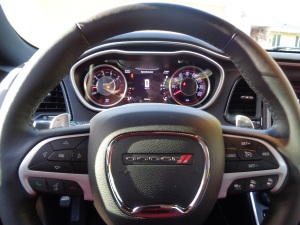
The original Dodge Challenger made its debut in the fall of 1969 as a ’70 model, and was built until April 1974. Almost 190,000 were sold. It shared its platform with the Plymouth Barracuda. The Challenger was offered in two-door hardtop and convertible style, and, back then like today, also boasted a wide choice of engines, including the 426-cubic-inch Hemi V-8, a 440 V-8, 383 V-8, 340 V-8, 318 V-8 and Slant-6.
Inside the ’15 Challenger, the center console is shaped some like the original, with a ridge on the far side. This year’s automatic shifter is a T-shaped handle. A large 8.4-inch touchscreen media center offers access to navigation, Uconnect and Harman/Kardon premium sound with SiriusXM satellite radio. Seats are covered in suede/nappa leather.
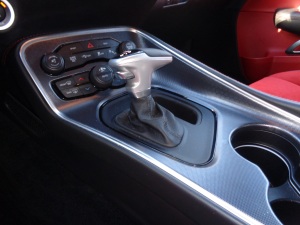
Fore of the driver are Dodge Performance Pages display, which can be used to adjust throttle, steering and transmission sensitivity, as well as activate “launch control” for the brutish engine. Individual trials and performances can be recorded in the display,
A total of 16.2 cubic feet of trunk space makes the Challenger roomiest in its class for cargo.
The Challenger R/T rides on Goodyear Eagle F1 245/45R20-inch tires; big four-piston Brembo brakes (14.2-inch rotors in front, 13.8 in the rear) lend secure stopping power.
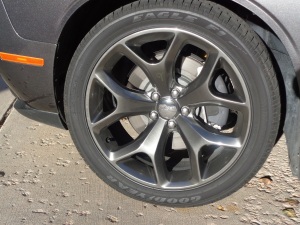
The 5.7 Hemi/8-speed automatic combination earned an EPA fuel-mileage estimate of 16/25 miles per gallon. My driving time resulted in an overall average of 22.6.
Among options not already mentioned, which helped push price from a base of $29,995 to $44,255, are remote start, adaptive speed control, automatic high-beam headlights, blind-spot and rear cross-path detection, heated steering wheel, paddle shifters and power sunroof.
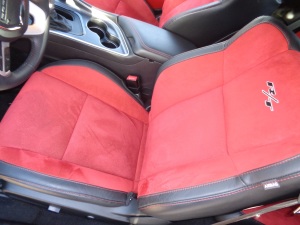
Here are the specifications for the ’15 Dodge Challenger R/T Plus:
- Wheelbase 116 inches
- Length 197.7 inches
- Width 75.7 inches
- Height 57.1 inches
- Curb Weight 4,082 pounds
- Track 63 inches front, 63.1 rear
- Ground Clearance 5 inches
- Turn Circle 38.1 feet
- Drivetrain Rear-wheel-drive
- Engine 5.7 Hemi V-8
- Horsepower/Torque 375/410
- Transmission 8-speed automatic
- Steering electronic power
- Fuel mileage estimate 16/25
- Fuel mileage average 22.6
- Fuel Tank 18.5 gallons
- Wheels 20-inch
- Cargo Volume 16.2 cubic feet
- Warranty 3 years/36,000 miles basic, 5/100,000 powertrain
Competitors Chevrolet Camaro, Ford Mustang, Nissan 370Z
Assembly Plant Brampton, Ontario, Canada
Parts Content U.S./Canadian 61%, Mexico 27%
Base Price of Lowest Model $26,995; Base Price of Review Model $29,995; Destination Charge $995; Sticker Price $44,255.
